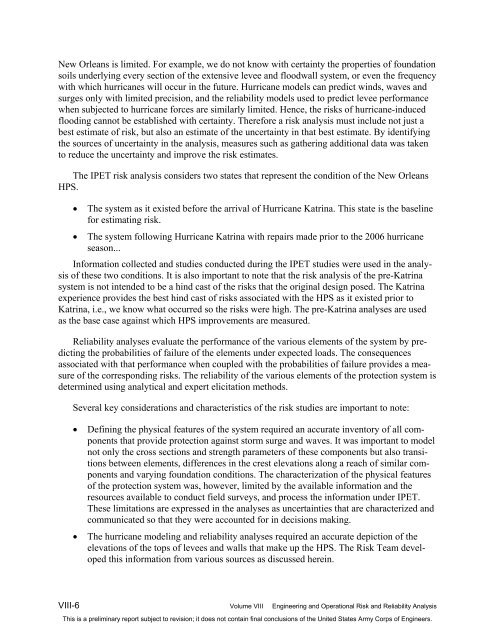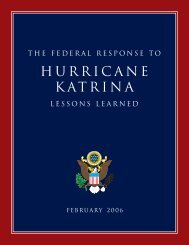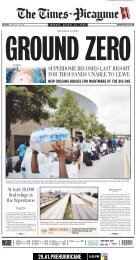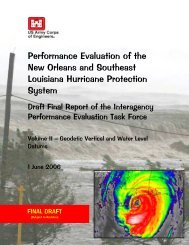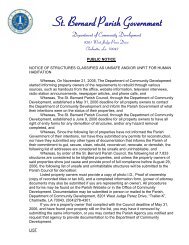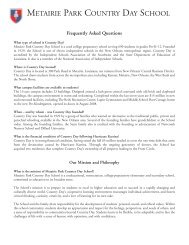IPET Report 3 Vol VIII
IPET Report 3 Vol VIII
IPET Report 3 Vol VIII
You also want an ePaper? Increase the reach of your titles
YUMPU automatically turns print PDFs into web optimized ePapers that Google loves.
New Orleans is limited. For example, we do not know with certainty the properties of foundation<br />
soils underlying every section of the extensive levee and floodwall system, or even the frequency<br />
with which hurricanes will occur in the future. Hurricane models can predict winds, waves and<br />
surges only with limited precision, and the reliability models used to predict levee performance<br />
when subjected to hurricane forces are similarly limited. Hence, the risks of hurricane-induced<br />
flooding cannot be established with certainty. Therefore a risk analysis must include not just a<br />
best estimate of risk, but also an estimate of the uncertainty in that best estimate. By identifying<br />
the sources of uncertainty in the analysis, measures such as gathering additional data was taken<br />
to reduce the uncertainty and improve the risk estimates.<br />
The <strong>IPET</strong> risk analysis considers two states that represent the condition of the New Orleans<br />
HPS.<br />
• The system as it existed before the arrival of Hurricane Katrina. This state is the baseline<br />
for estimating risk.<br />
• The system following Hurricane Katrina with repairs made prior to the 2006 hurricane<br />
season...<br />
Information collected and studies conducted during the <strong>IPET</strong> studies were used in the analysis<br />
of these two conditions. It is also important to note that the risk analysis of the pre-Katrina<br />
system is not intended to be a hind cast of the risks that the original design posed. The Katrina<br />
experience provides the best hind cast of risks associated with the HPS as it existed prior to<br />
Katrina, i.e., we know what occurred so the risks were high. The pre-Katrina analyses are used<br />
as the base case against which HPS improvements are measured.<br />
Reliability analyses evaluate the performance of the various elements of the system by predicting<br />
the probabilities of failure of the elements under expected loads. The consequences<br />
associated with that performance when coupled with the probabilities of failure provides a measure<br />
of the corresponding risks. The reliability of the various elements of the protection system is<br />
determined using analytical and expert elicitation methods.<br />
Several key considerations and characteristics of the risk studies are important to note:<br />
• Defining the physical features of the system required an accurate inventory of all components<br />
that provide protection against storm surge and waves. It was important to model<br />
not only the cross sections and strength parameters of these components but also transitions<br />
between elements, differences in the crest elevations along a reach of similar components<br />
and varying foundation conditions. The characterization of the physical features<br />
of the protection system was, however, limited by the available information and the<br />
resources available to conduct field surveys, and process the information under <strong>IPET</strong>.<br />
These limitations are expressed in the analyses as uncertainties that are characterized and<br />
communicated so that they were accounted for in decisions making.<br />
• The hurricane modeling and reliability analyses required an accurate depiction of the<br />
elevations of the tops of levees and walls that make up the HPS. The Risk Team developed<br />
this information from various sources as discussed herein.<br />
<strong>VIII</strong>-6 <strong>Vol</strong>ume <strong>VIII</strong> Engineering and Operational Risk and Reliability Analysis<br />
This is a preliminary report subject to revision; it does not contain final conclusions of the United States Army Corps of Engineers.


